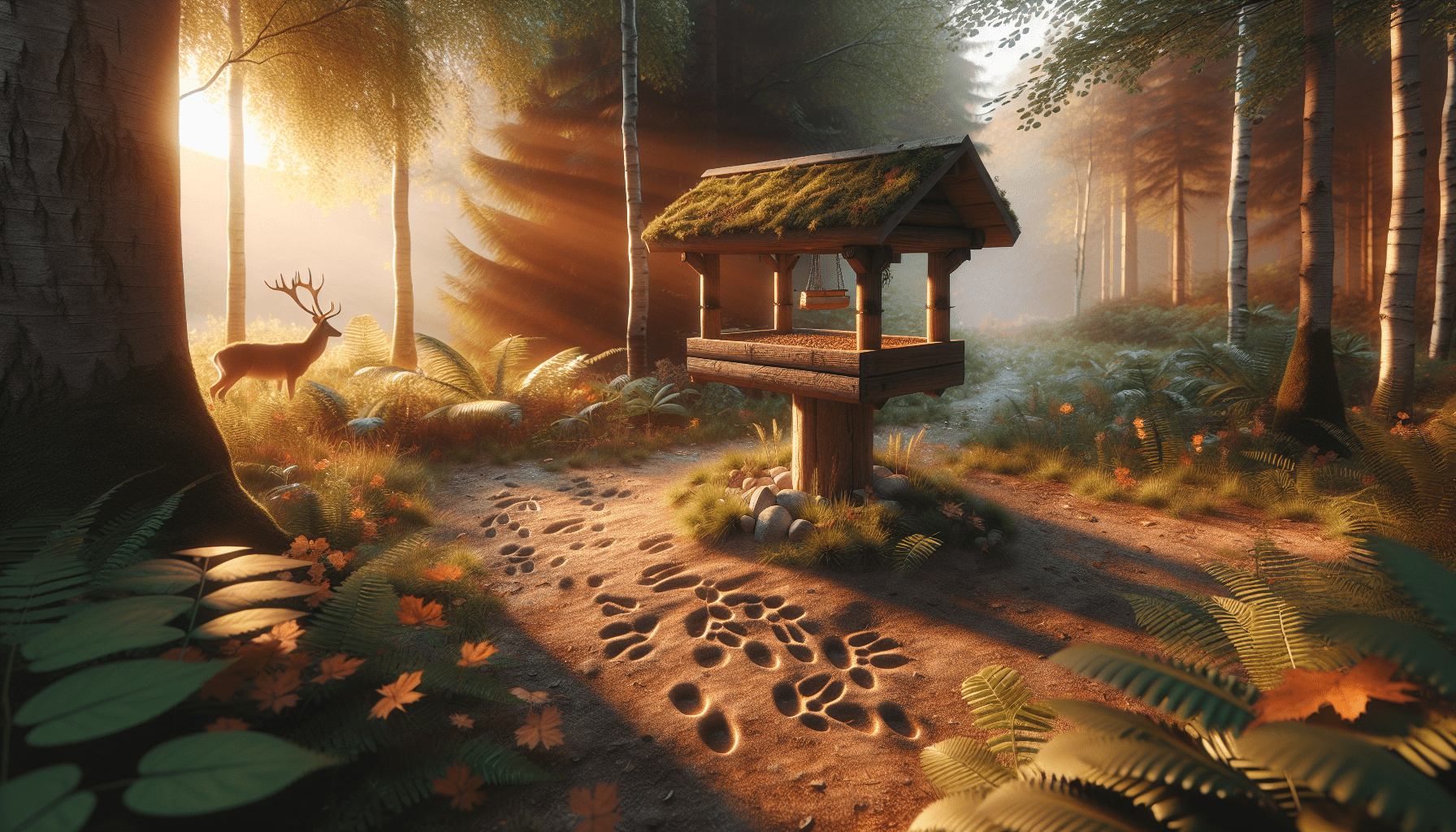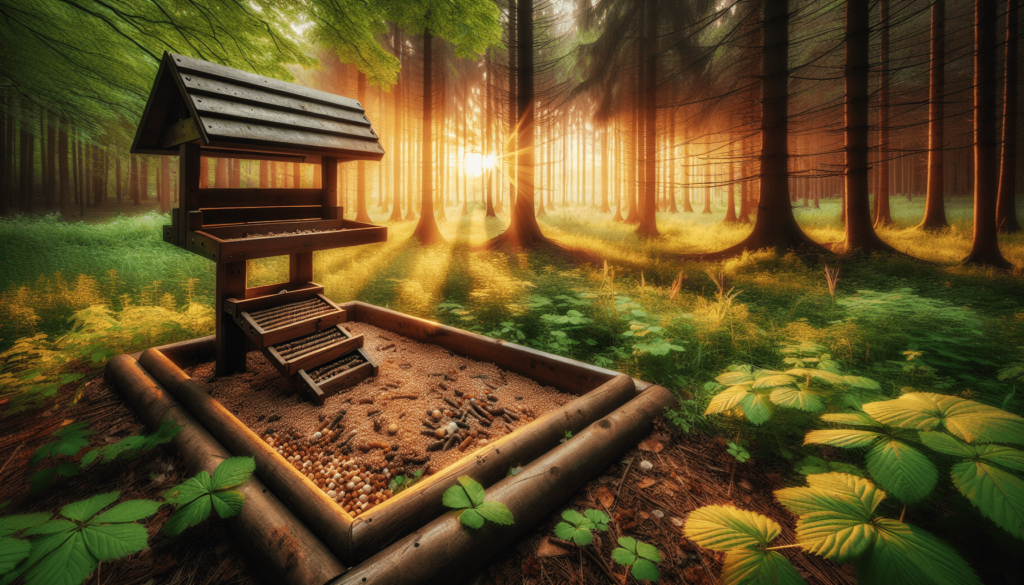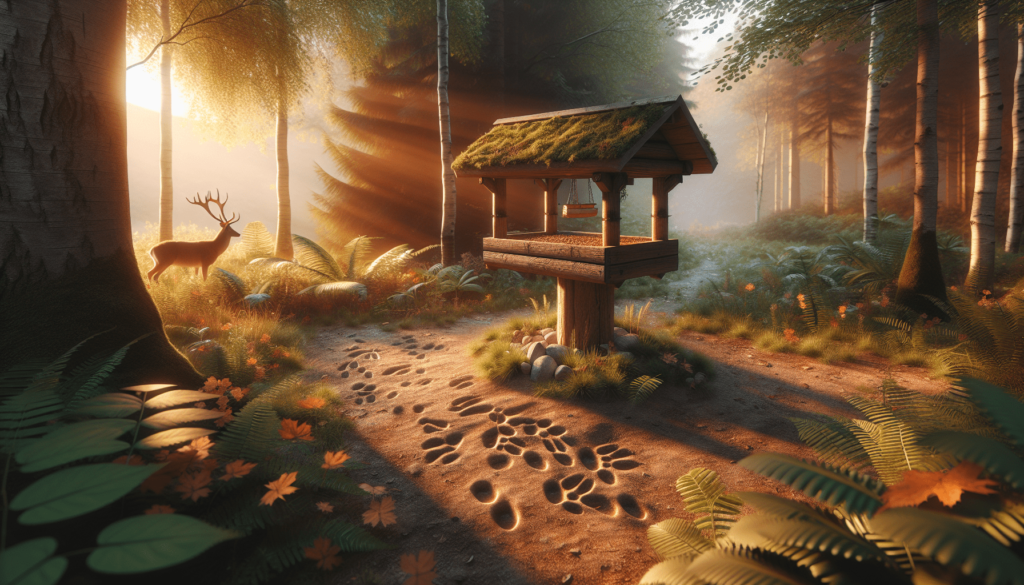
Have you ever wondered when the best time is to set up your deer feeder to attract those elusive creatures? Understanding the optimal times to install your deer feeder is crucial for maximizing its effectiveness. You’ll not only want it to be positioned right, but you’ll also want to ensure it attracts your desired visitors consistently. Let’s walk through the best times and practices for setting up your deer feeder.
Understanding Deer Behavior
Before you even think about installation, it’s essential to grasp the natural habits and behaviors of deer. Understanding these can significantly impact how effectively your feeder draws in deer.
Seasonal Changes
Deer are influenced by the seasons, which dictate their feeding patterns. In spring and summer, they seek out high-protein forage to support growth. During fall and winter, however, they search for energy-rich food sources. Your feeding schedule may need to adapt accordingly.
- Spring: As new vegetation emerges, provide a mix of grains and protein supplements to support growth.
- Summer: Focus on high-protein options like alfalfa pellets.
- Fall: Transition to energy-rich feeds to prepare deer for winter.
- Winter: Offer high-calorie grains to help deer through harsh conditions.
Time of Day
Deer are crepuscular, meaning they are most active during dawn and dusk. Strategically timing the setup of your feeder can help align with their natural feeding habits.
Benefits of Timing:
- Dawn and Dusk: Setting your feeder to dispense food during these times can attract more deer when they are naturally foraging.
- Consistency: Regular feeding schedules can train deer to visit your feeder, which increases the chances of sightings.
Optimal Installation Seasons
Now that you have familiarized yourself with the behavioral tendencies of deer, let’s discuss the right seasons for setting up your deer feeder.
Early Spring
Installing your deer feeder in early spring gives you plenty of time to condition deer to visit. As they emerge from the winter conditions, they are on the lookout for accessible food sources.
- Why Early Spring?
- It allows deer to associate your feeder with food when natural sources begin to sprout.
- Early spring also gives you time to adjust the feeder and attract more deer as they grow into summer.
Late Summer to Early Fall
The late summer period is another prime time to install your deer feeder. This is when deer begin to fatten up for winter, and an influx of natural food allows a seamless transition to supplemental feeding.
- Benefits of This Timing:
- Deer will be more focused on foraging during this time, making them more likely to visit.
- You can fine-tune feeding practices just ahead of the hunting season for those looking to harvest.
Mid to Late Winter
If you missed earlier opportunities, consider installing a feeder during mid to late winter. During this period, deer need food to sustain them through the cold months.
- What to Expect:
- You may find your feeder helping struggling deer maintain their energy levels.
- This timing isn’t ideal for attracting deer for hunting but is great for observation and general wildlife preservation.

Location, Location, Location
The effectiveness of your deer feeder isn’t just about timing; where you install it also plays a vital role.
Choosing the Right Site
Selecting the right spot for your feeder ensures that it will be accessible to deer while deterring other unwanted animals.
- Recommendations:
- Proximity to Bedding Areas: Place your feeder near areas where deer commonly bed down to reduce travel time.
- Avoiding Open Spaces: Instead, look for places with natural cover, like thickets or brush.
- Water Sources: Position your feeder near natural water sources, as deer require both food and water.
Terrain Considerations
Different terrains will affect how easily deer can access your feeder.
- Flat Lands: Set feeders in open areas for less resistance.
- Hilly Terrain: Place feeders where deer can navigate more easily, avoiding steep slopes that could discourage visits.
Types of Feeders and Feed
Not all feeders are created equal, and the type of feeder you choose can affect your success.
Types of Feeders
There are a variety of deer feeders on the market, and choosing one that meets your needs can enhance your overall experience.
| Feeder Type | Description |
|---|---|
| Gravity Feeders | Simple and cost-effective. They use gravity to dispense feed and are easy to fill. |
| Automatic Feeders | These provide scheduled feedings and are ideal for attracting deer at specific times. |
| Spinner Feeders | They scatter corn or pellets, leading to a larger area of food to attract deer. |
| Trough Feeders | Ideal for feeding multiple deer at once, these can reduce competition at a single point. |
Choosing the Right Feed
Once you’ve decided on the feeder type, choosing the right feed is also important. Here are factors to keep in mind:
- Nutritional Content: Select feeds high in protein and energy during the spring and summer months. In fall and winter, opt for energy-rich grains.
- Local Preferences: Understand what types of food deer in your area prefer. Some may favor corn, while others might enjoy a mix of grains or specialized pellets.

Maintenance and Monitoring
Setting up the feeder is just the beginning. Regular maintenance and monitoring are crucial for long-term effectiveness.
Regular Maintenance Routines
Keeping your deer feeder in prime condition can extend its life and improve its ability to attract deer.
- Check for Damage: Inspect your feeder regularly to ensure there are no holes, leaks, or damages.
- Refill Feed Regularly: Consistent supply ensures deer return regularly, so keep an eye on feed levels.
Monitoring Deer Activity
Setting up game cameras around your feeder can give you insight into deer movement and behavior.
- Why Use Game Cameras?
- Track the time of day deer frequent the area.
- Identify different deer visiting, which can help you understand the local herd.
Understanding Environmental Factors
Several environmental factors can impact deer behavior and the effectiveness of your feeder.
Weather Conditions
Weather conditions can significantly affect deer activity levels and feeding times.
- Rain: Deer often feed less during heavy rain. You may need to monitor your feeder more closely but don’t be discouraged if visits drop.
- Snow: Snow can force deer to seek out feeders, making winter an excellent time to have one set up.
Food Scarcities
Natural food sources can influence deer to visit your feeder more frequently.
- Habitat Changes: Be aware of changes in local habitats due to development or natural events, as these may force deer to rely on supplemental feeding.
Final Thoughts
By considering all these elements – from understanding deer behavior to choosing the right location, feeder, and feed, you can significantly enhance your chances of drawing in those magnificent creatures.
Remember that consistency, patience, and observation are your best allies when it comes to deer feeding. The connection you build with nature through this process can enrich your understanding and appreciation of wildlife. Whether you’re hoping to catch a glimpse of deer for leisure or manage their populations responsibly, setting up your deer feeder with intent and timing will yield the best results.
As you move forward, take a step back and appreciate the symbiotic relationship between you and the wildlife around you. With the right setup and care, your deer feeder can become a vital tool for attracting deer while providing nourishment and maintaining a healthy wildlife population. Enjoy the experience of watching these creatures thrive, knowing you played a significant role in their well-being.





